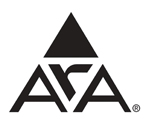Party Rentals for Weddings and Other Events
Serving Lutz, Wesley Chapel, Land O Lakes, Brooksville FL and the surrounding area.
West Coast Rental Inc. is a superior wedding, event, & party rental company supplying wedding and party equipment throughout Lutz, Wesley Chapel, Land O Lakes, Brooksville FL and surrounding areas. Whether you live in Clearwater, Lakeland, St. Petersburg, or Brooksville, one of our two locations is just a short drive away.
Our team of event and party rental professionals has over 50 years of combined experience in the event rental industry and would love to put our experience to work for you. Whether you’re planning a backyard party, a formal wedding or a corporate event, our goal is to provide quality party rental equipment, affordable pricing, and exceptional customer service to each and every customer.
From tents to teaspoons and so much in between, we have what you need to make your next event fabulous! West Coast Rental Inc. is the go-to name for party rentals, making it the company to remember when planning your next fabulous event in the Lutz, Wesley Chapel, Land O Lakes, Brooksville, and surrounding areas!
When you choose West Coast Rental for your event, you can be assured you will get quality equipment with terrific customer service. Please give us a call or fill out our form to get more information about our rental equipment or a custom quote for your event today!














